Chargepoint Updates App That Finds Electric-<b>Car</b> Charging Stations <b>...</b> |
- Chargepoint Updates App That Finds Electric-<b>Car</b> Charging Stations <b>...</b>
- Pako - <b>Car</b> Chase Simulator <b>Review</b> | Touch Arcade
- <b>Car Review</b>: 2015 Acura ILX Dynamic | Driving
| Chargepoint Updates App That Finds Electric-<b>Car</b> Charging Stations <b>...</b> Posted: 22 Aug 2014 08:00 AM PDT Chargepoint Updates App That Finds Electric-Car Charging Stations: Review Public charging for electric vehicles is currently an adventure. Just finding a charging station can sometimes be a challenge. The most common way to locate charging stations in unfamiliar areas is to use a locator app on a smartphone. There are several available, but one of the more popular is provided by the ChargePoint network of charging stations. Its app not only locates charging sites, it displays the real-time status of the station: available, in use, or unavailable. However, most electric-car drivers I know use PlugShare today--in part because it also includes residential locations where people are willing to let an electric-vehicle driver plug into their home charging station. ChargePoint presently lists 33,000 public charging stations, while PlugShare shows 50,000 locations, both public and residential. ChargePoint says its goal is to be the #1 app used by electric-vehicle drivers. DON'T MISS: Charging Electric Vehicles Across America: How We Did It & Where This may be an uphill battle, as most electric-car users find the tips from actual users of the individual sites to be one of the most useful features--and there, PlugShare has the clear edge. I checked several stations near me, as well as various locations across the country, and many had dozens reviews on PlugShare--but none yet on ChargePoint. But perhaps as public charging stations become the norm, it is possible people won't feel the need to check an app that includes private stations. Many updates The previous generation of the Chargepoint app gave useful information, but felt clunky and unrefined. For example, every time you opened the app you had to wait at least 5 seconds before it "found" you and your local charging stations. This was particularly frustrating when all I wanted to do was check the charging status of my vehicle. Its symbols were rather simple and it felt like it had been designed for programmers, not for drivers and riders. The new app has a significantly upgraded interface and a few new features. Step 1 - Finding an available charging location On the map view, the new App shows how many plugs are available for electric cars to use. You can tell how many are already in use by the pie chart that surrounds the central number. ALSO SEE: Electric Motorcycle Road Trip: What I Learned, What You Need To Know If it's fully green, then all the chargers are available. If part of it is white, then some are taken and some are available. If it's fully white, then all charging stations are taken. Step 2 - Plugging in The main way to initiate a charging session used to be either a ChargePoint card or an RFID-enabled credit card. The new App now lets you start a session using your phone just by tapping the screen. Many electric-car drivers who use public charging stations have Chargepoint cards, but those will no longer be necessary. This is a welcome upgrade, and it reduces the number of charge-network access cards you're required to carry to cover all bases. Step 3 - Tracking your charge Generally you know how much charge you need to get to your destination, and so far, ChargePoint is the only charging company that delivers this information. Now the company has made it even easier, by setting the Charging Status screen to be the default screen while your vehicle is actually charging. You could do this with the previous app, but you had to switch screens and wait for irrelevant information--your location and nearby charging stations--to load first. Step 4 - Disconnecting and tracking charge Once your vehicle is charged, the new app can be set to send a text message or email to your smartphone to let you know it's done. This also offers peace of mind, because it will let you know if your vehicle has been unplugged by another person. This is rare, but it does happen sometimes. The ChargePoint App also includes predictive searching: The app autofills your search with recent searches or nearby destinations. You can also choose which map service to use; options include Google Maps, Apple Maps, and Waze. A satellite view of parking lots or structures is intended to let you see the exact location of a charger in a parking lot, so you don't have to drive around searching for it when your battery is low. This can be hit or miss, though, since some charging locations appear to be inside the building they're actually next to. MORE: 'Kick Gas' Movie: Driving Across U.S. In Electric Car & Motorcycles I found the new app to be fast: very fast. It took less than 2 seconds to load, even when using cellular data service, and the stations loaded quickly as well. But the ChargePoint app continues to have some features that I find to be poorly designed. One is that it clusters stations together when the map is zoomed out. Sometimes clusters can include stations on opposite sizes of a river. ChargePoint clearly made a conscious decision to do this, but I find it strange. ChargePoint smartphone app for locating electric-car charging stations, Aug 2014 News In Your Inbox GreenCarReports Advertisement News In Your Inbox GreenCarReports Advertisement Photo GalleriesAdvertisement Chargepoint Updates App That Finds Electric-Car Charging Stations: Review Public charging for electric vehicles is currently an adventure. Just finding a charging station can sometimes be a challenge. The most common way to locate charging stations in unfamiliar areas is to use a locator app on a smartphone. There are several available, but one of the more popular is provided by the ChargePoint network of charging stations. Its app not only locates charging sites, it displays the real-time status of the station: available, in use, or unavailable. However, most electric-car drivers I know use PlugShare today--in part because it also includes residential locations where people are willing to let an electric-vehicle driver plug into their home charging station. ChargePoint presently lists 33,000 public charging stations, while PlugShare shows 50,000 locations, both public and residential. ChargePoint says its goal is to be the #1 app used by electric-vehicle drivers. DON'T MISS: Charging Electric Vehicles Across America: How We Did It & Where This may be an uphill battle, as most electric-car users find the tips from actual users of the individual sites to be one of the most useful features--and there, PlugShare has the clear edge. I checked several stations near me, as well as various locations across the country, and many had dozens reviews on PlugShare--but none yet on ChargePoint. But perhaps as public charging stations become the norm, it is possible people won't feel the need to check an app that includes private stations. Many updates The previous generation of the Chargepoint app gave useful information, but felt clunky and unrefined. For example, every time you opened the app you had to wait at least 5 seconds before it "found" you and your local charging stations. This was particularly frustrating when all I wanted to do was check the charging status of my vehicle. Its symbols were rather simple and it felt like it had been designed for programmers, not for drivers and riders. The new app has a significantly upgraded interface and a few new features. Step 1 - Finding an available charging location On the map view, the new App shows how many plugs are available for electric cars to use. You can tell how many are already in use by the pie chart that surrounds the central number. ALSO SEE: Electric Motorcycle Road Trip: What I Learned, What You Need To Know If it's fully green, then all the chargers are available. If part of it is white, then some are taken and some are available. If it's fully white, then all charging stations are taken. Step 2 - Plugging in The main way to initiate a charging session used to be either a ChargePoint card or an RFID-enabled credit card. The new App now lets you start a session using your phone just by tapping the screen. Many electric-car drivers who use public charging stations have Chargepoint cards, but those will no longer be necessary. This is a welcome upgrade, and it reduces the number of charge-network access cards you're required to carry to cover all bases. Step 3 - Tracking your charge Generally you know how much charge you need to get to your destination, and so far, ChargePoint is the only charging company that delivers this information. Now the company has made it even easier, by setting the Charging Status screen to be the default screen while your vehicle is actually charging. You could do this with the previous app, but you had to switch screens and wait for irrelevant information--your location and nearby charging stations--to load first. Step 4 - Disconnecting and tracking charge Once your vehicle is charged, the new app can be set to send a text message or email to your smartphone to let you know it's done. This also offers peace of mind, because it will let you know if your vehicle has been unplugged by another person. This is rare, but it does happen sometimes. The ChargePoint App also includes predictive searching: The app autofills your search with recent searches or nearby destinations. You can also choose which map service to use; options include Google Maps, Apple Maps, and Waze. A satellite view of parking lots or structures is intended to let you see the exact location of a charger in a parking lot, so you don't have to drive around searching for it when your battery is low. This can be hit or miss, though, since some charging locations appear to be inside the building they're actually next to. MORE: 'Kick Gas' Movie: Driving Across U.S. In Electric Car & Motorcycles I found the new app to be fast: very fast. It took less than 2 seconds to load, even when using cellular data service, and the stations loaded quickly as well. But the ChargePoint app continues to have some features that I find to be poorly designed. One is that it clusters stations together when the map is zoomed out. Sometimes clusters can include stations on opposite sizes of a river. ChargePoint clearly made a conscious decision to do this, but I find it strange. ChargePoint smartphone app for locating electric-car charging stations, Aug 2014 News In Your Inbox GreenCarReports Advertisement News In Your Inbox GreenCarReports Advertisement Photo GalleriesAdvertisement |
| Pako - <b>Car</b> Chase Simulator <b>Review</b> | Touch Arcade Posted: 22 Aug 2014 08:30 AM PDT
Being a simplified high-scoring game, there isn't much to Pako gameplay-wise. Select a map and your car instantly starts up, driving at full speed without any brakes. Tap on the right or left sides of the screen to turn, and that's it about it for the controls. As you can imagine, maps are littered with obstacles that themed to whatever map you choose. The goal? To last as long as you can before hitting something and ending your run. Of course, being a car chase simulator, you also have to avoid the requisite police cars coming after you. The longer you survive, the more police are thrown at you.
Pako may be pretty basic, but it has two things going for it: diversity and replayability. While the premise never changes, I was a big fan of the different maps that Pako offers. From the cramped Mall parking lot to the traffic-filled Highway to the awesome Square filled with tanks, each map has a unique tone that offers different strategies of avoidance. Even cooler, each map has its own vehicle to drive that has its speed and turning stats. Suffice to say, the Graveyard's Hearst drives a lot different than the Mall's hatchback. When it comes to replayability, Pako does what it can to keep you coming back. Full leaderboard support keeps you motivated to beat your friends, while a quick replay system gets you back in the game within seconds. The fact that runs are typically pretty short also go a long way towards keeping the game accessible for the quickest of playthroughs. Most importantly, the combination of vehicle control, clever placement of obstacles and police cars always gives that illusion of advancement, creating that "just one more run" feeling that makes similar games so appealing.
While there's plenty of opportunity to build up your skills via memorizing maps and vehicle intricacies, there's always room for improvement. I would have liked to see more interactive leaderboard support in-game — as it is you have to quit a game and go back to the main menu in order to see where your leaderboard position is with friends. Something that automatically monitored the next highest friend on your list at all times as motivation would have been cool. There's also been word of frame rate stuttering and Game Center issues, but I didn't really encounter them. It's hard not to recommend Pako. It's simple to learn, has decent variety in terms of map selection, offers adequate leaderboard support, and does just enough to keep you wanting to come back for more in terms of challenge and approachability. It's certainly not the deepest game, even in its own genre. However, I have no problem offering a recommendation for what it offers. |
| <b>Car Review</b>: 2015 Acura ILX Dynamic | Driving Posted: 20 Aug 2014 05:31 AM PDT Overview Upscale compact sedan with sporty performance As an avid reader, I'm a huge fan of many types of fiction — sci-fi, historical, mystery, satire, etc. If it has anything approaching an original premise or decent plot, I'll give it a go. But, my guiltiest pleasure comes from reading the target demographic synopses supplied by various automakers when they debut their new models. I can't tell if those toiling in the marketing departments actually believe what they write, or whether it's all an elaborate inside joke to trick unsuspecting rubes. Honestly, some of it is priceless. As one example, here's the synopsis for Acura's ILX compact sedan when it first came out a couple of years ago: "The target customers for the new ILX are the younger members of Generation X and members of Generation Y — successful 20- and 30-somethings moving into the luxury car ranks but looking for high-value propositions in their purchases. They are young business professionals who are most likely single or soon to be married. They live in larger cities, are still in touch with a youthful mindset and lifestyle, and yet now embrace adult proprieties and values. In short, like the ILX, they embody 'youth with maturity.'" Call me old and cynical if you like, but most 20-somethings I know are desperately searching for any stable job just so they can pay off their student loans and/or move out of their parents' basements. Meanwhile, 30-somethings — the ones who have actually found meaningful employment in larger cities — are paying crippling rents/mortgages/parking fees and have become well acquainted with the concept of public transportation. The ones with the discretionary income to move into the luxury ranks or, more likely, downsize from something more luxurious into something smaller, sportier and, yes, more youthful, are we Boomers. And, as a card-carrying member of the greying set, living mortgage-free in the suburbs, I rather like the ILX for its aforementioned smaller, sportier and youthful amenities — not to mention its four-door, passenger-carrying abilities. Really, for zipping through traffic or hopping on the highway to get somewhere, the compact Acura displays a proficiency bordering on ideal. How could it not? For all intents and purposes, it's a larger, fancier, higher-content Honda Civic Si. That's by no means a putdown. The Si, the most powerful iteration within the Civic family, has a high-revving agility to it that's perfectly suited for the cut and thrust of urban commuting. The ILX — at least the topline Dynamic model and its 201-horsepower, 2.4-litre DOHC four-cylinder with six-speed manual — is more of the same in less extreme packaging. (Those opting for the less-expensive base 2.0-litre ILX are missing out on all of the fun.) Weighing in at a lightweight 1,359 kilograms and mated to an engine that doesn't truly sing until it zings above 6,000 rpm, the ILX Dynamic is quick rather than eyeball-flattening fast. Still, there's more than enough juice in the lower ranges that one doesn't have to keep it in some absurdly low gear with the tach needle bouncing off the peg just to stay with the flow of traffic. The four has amazing tractability and is quite content at lower revs, though a quick downshift is helpful if more extreme acceleration is desired. Rather than look upon that downshift as a sign of unsuitability in day-to-day driving, though, consider it an invitation to play with one of the slickest manual gearboxes in any car costing less than six figures. It truly is a joy rowing the lever through the gates, the only exception being the fifth-to-sixth changeup, which requires a slower, more deliberate action to avoid getting hung up in the gate between fourth and sixth. The light and revvy nature of the powertrain is matched by a suspension that is capable of great fun in the twisty bits while comforting the ILX's occupants with a ride free of overt harshness. The sedan's MacPherson strut front and multi-link rear suspension systems are assisted by something Honda likes to call Amplitude Reactive Dampers, which have two separate levels of "tuning" — unique compression and rebound damping settings to provide the desired ride and handling attributes depending on how the car is being driven. And backing up the ride and handling are the usual safety devices for a sport sedan of the Acura's nature, including vehicle stability assist and traction control. As Honda's upscale channel, a certain amount of refinement is anticipated of an Acura. Don't confuse that with luxury, however, as the brand's focus on sportiness is rather resolute. Yes, a full load of modern conveniences and tech toys are there at your disposal (sunroof, push-button start, multi-information display, navigation system, rear-view camera, surround-sound audio system with 10 speakers, etc.), but forget the plush leather and polished wood. Soft-touch materials and a cabin layout that's based on logic, not emotion, are what you get. Sybaritic levels of comfort (e.g. Lexus) are not part of the plan. As for roominess, the ILX is compact-sized, so rear-seat accommodations for adults of above-average proportions are not the best. If the back seat is going to get more than occasional use, the new, mid-sized 2015 TLX (replacing both the TL and TSX) is a more pragmatic choice. Snobbier types might gravitate toward something like Audi's A3, but there is a certain Euro vibe to the ILX that bears consideration — at a little more than $32,000 for the all-in Dynamic version, it really doesn't have much competition from its Japanese counterparts in terms of price and performance. Unfortunately, for Boomers who have followed the auto scene for a while, the Acura name doesn't have the same cachet (or the styling) it did a decade ago. Too bad, the ILX Dynamic offers plenty of talent for a reasonably priced sporty sedan; those of us with the maturity and means, as well as a "youthful mindset," could get a kick out of it. THE SPECS |
| You are subscribed to email updates from car review - Google Blog Search To stop receiving these emails, you may unsubscribe now. | Email delivery powered by Google |
| Google Inc., 20 West Kinzie, Chicago IL USA 60610 | |
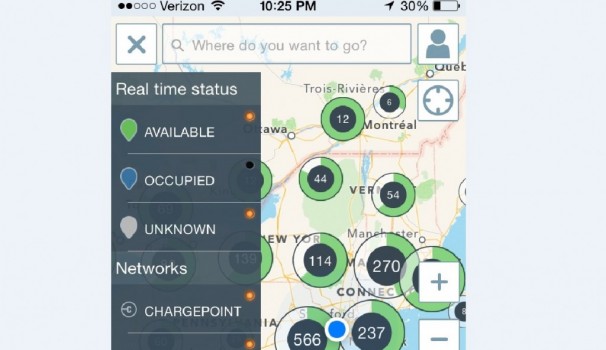










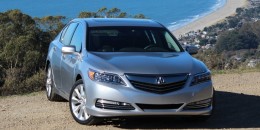

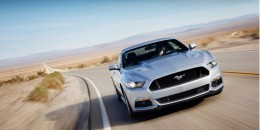
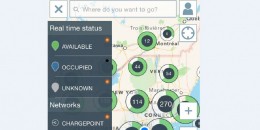
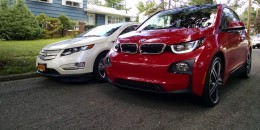


No comments:
Post a Comment